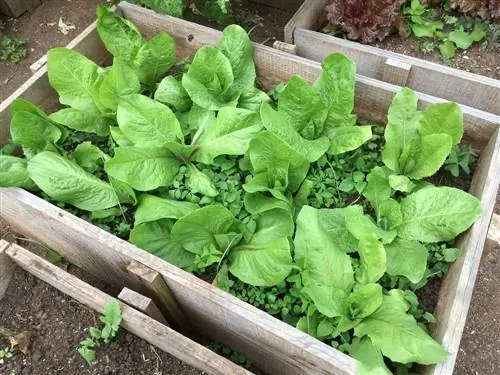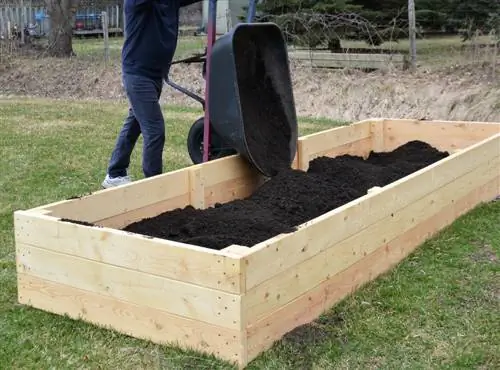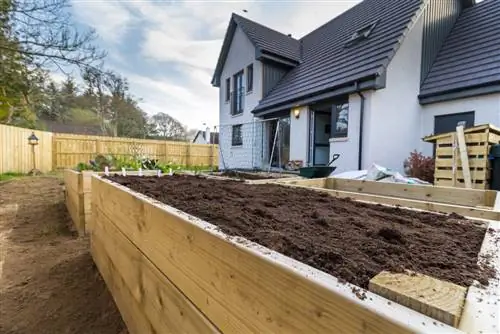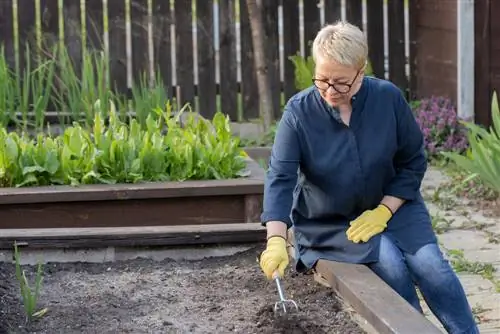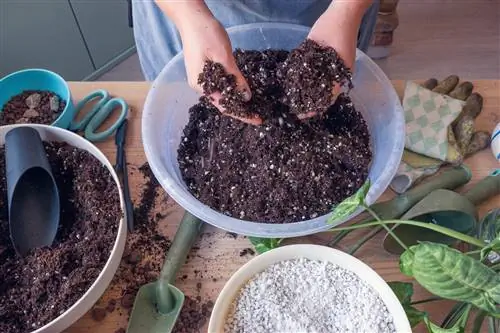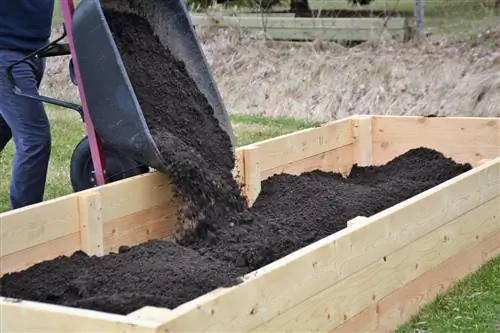- Author admin [email protected].
- Public 2023-12-16 16:46.
- Last modified 2025-01-23 11:21.
The classic raised garden bed basically corresponds to a planted compost heap - with correspondingly fertile soil. However, strong layering is not possible in all raised bed shapes.
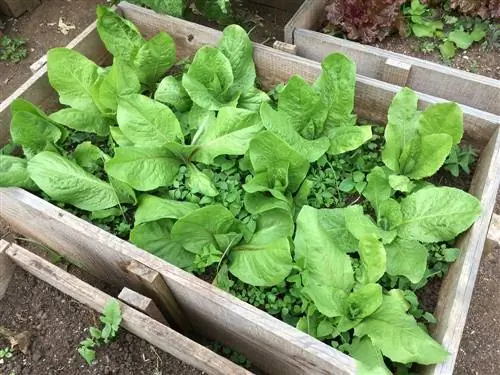
How do you fill a raised bed with just soil?
To fill a raised bed with soil only, use balcony plant or pot plant soil enriched with compost, perlite and rock dust. Add algae lime and horn shavings if necessary. A drainage made of expanded clay balls, gravel or gravel is placed on the ground.
Fill raised bed only with soil
Smaller raised beds - for example the planting tray of a raised table bed or a fruit crate raised bed - are not suitable for layering because there is not enough space for the necessary decomposition processes. You simply fill in good potting soil into such raised beds, as well as into a raised bed where layering is not possible due to a lack of material or where you would like to save yourself the effort. However, it is always advisable to have drainage filled at the bottom, which should be up to 30 centimeters thick in a high bed. The light expanded clay balls (€31.00 at Amazon), but also gravel and/or gravel are particularly suitable for this.
Which soil for the raised bed?
A good balcony plant or pot plant soil, which you can improve with compost, perlite and rock dust, is generally suitable. For herbs, use herb soil, which is thinned out with sand for the Mediterranean species. Heavy eaters such as tomatoes and other fruit vegetables, on the other hand, benefit from tomato soil.
Tip
Algae lime and horn shavings also improve potting soil for raised beds in terms of nutrient composition.

